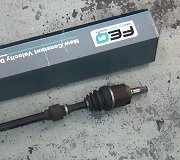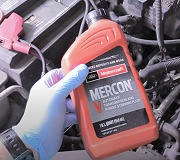Don't worry about keeping each roller with it's mating surface. All three go through the same travel and set up the same very slight wear patterns. This is a good time to inspect those six rolling surfaces in the housing. If you can feel the slightest irregularity with your finger, you really have junk. Instead, wash all the grease off, then shine a light in there and look at the reflections on those surfaces. If you see any waviness, similar to looking at a car body reflecting the ground, like at a car show, the rollers will bind on those surfaces when you're accelerating and turning. You'll typically feel that in the steering wheel up to around 35 mph. A remanufactured half shaft is usually much less expensive than a new housing from the dealer, although you always run the risk of getting one with a worn housing that they didn't catch when they rebuilt it.
If there's no reason to suspect a problem with the housing, just refill it with the special grease. I prefer to squeeze half a packet in the housing first, push the tripod into it, then put the other half packet in the boot. The boots are designed to squeeze the grease into the tripod every revolution. I don't know how to describe the amount of grease in a packet, but as a former suspension and alignment specialist, I always had a dozen extra packets in my toolbox. Replacement boots often came with two packets of grease. One was for every application when the boot was replaced, and the second one was used only when the joint was disassembled and cleaned. Sometimes the same boot fits different joints that held more grease. The entire assembly should be filled roughly 1/2 to 3/4 full of grease. Over-filling is just as bad as not enough grease because the rollers will have to push the grease back and forth rather than just roll through it.
I don't know if you can buy just the grease packets. They will come with replacement boot kits. Your friendly mechanic might have extra packets he will part with.
Caradiodoc
Tuesday, April 6th, 2010 AT 3:52 PM



